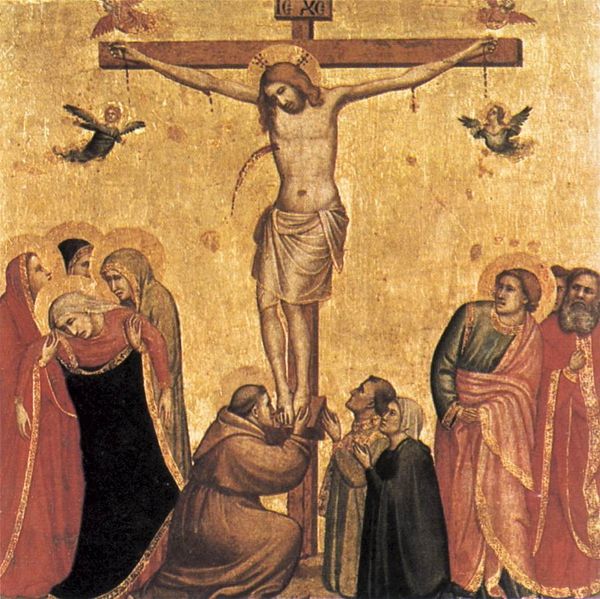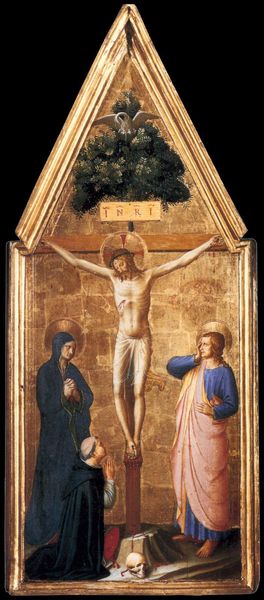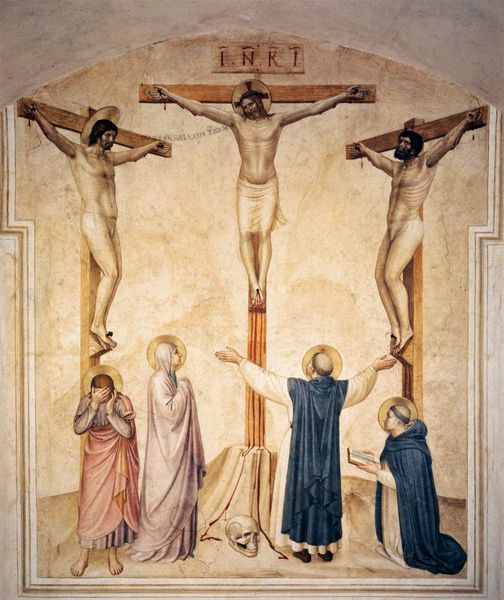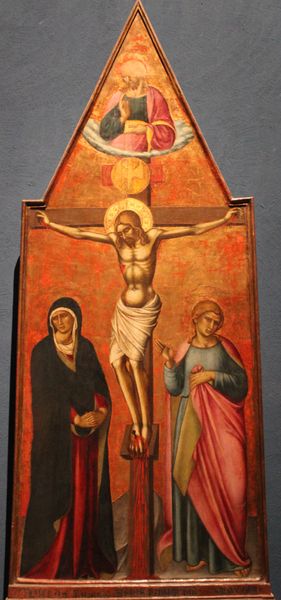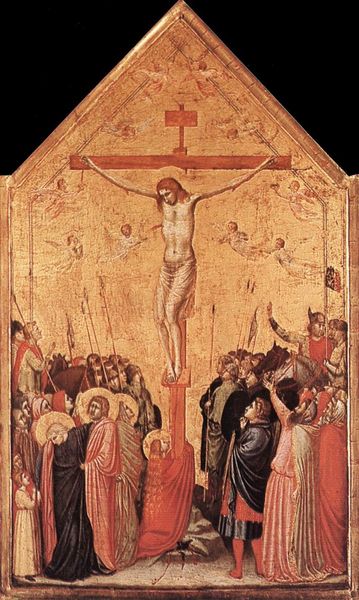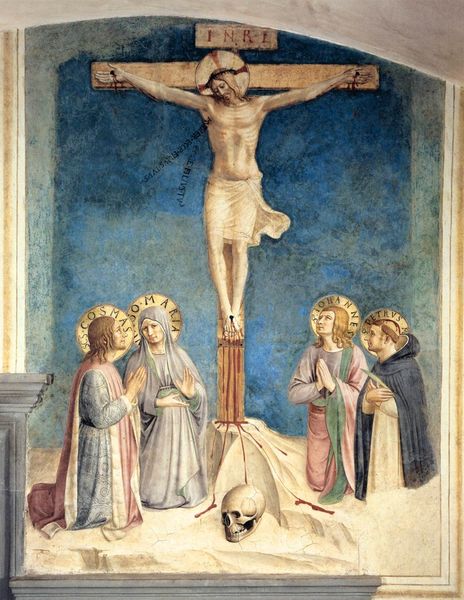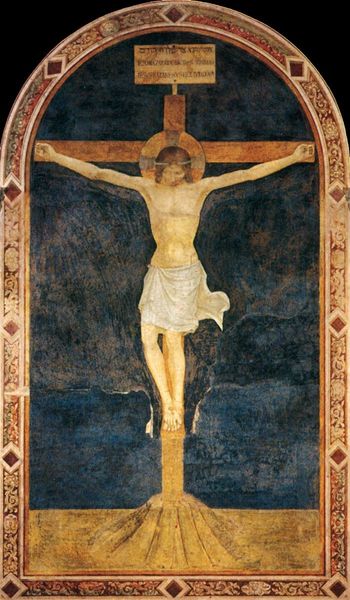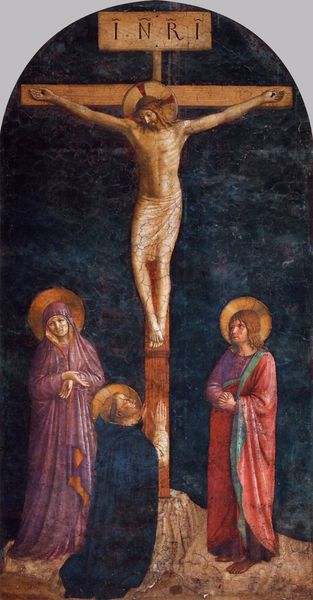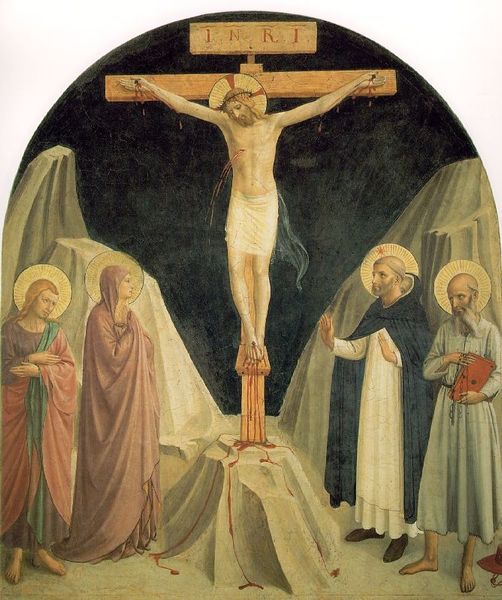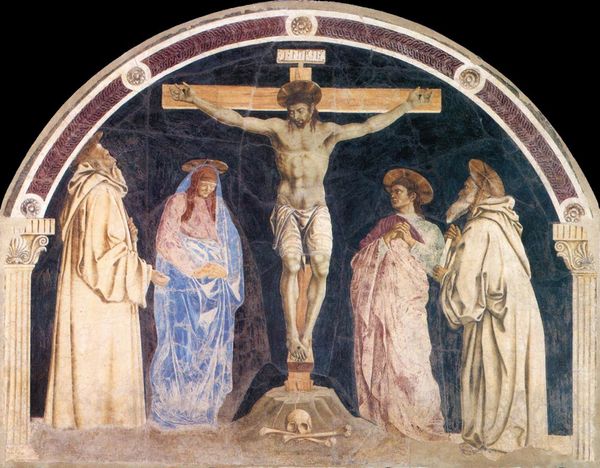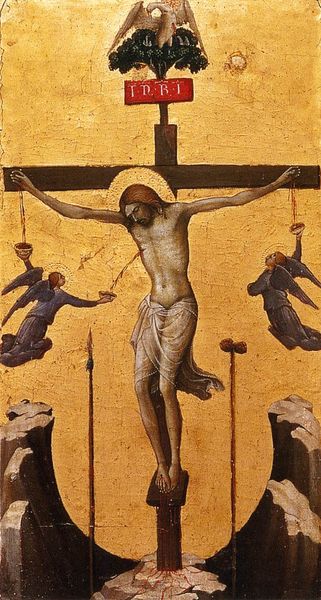
Crucifixion with the Virgin, John the Evangelist, and Mary Magdelene 1420
0:00
0:00
fraangelico
Private Collection
tempera, painting, oil-paint
#
portrait
#
tempera
#
painting
#
oil-paint
#
figuration
#
oil painting
#
jesus-christ
#
cross
#
christianity
#
painting painterly
#
crucifixion
#
history-painting
#
italian-renaissance
#
early-renaissance
#
virgin-mary
Dimensions: 64 x 38 cm
Copyright: Public domain
Curator: Standing before us is Fra Angelico’s "Crucifixion with the Virgin, John the Evangelist, and Mary Magdalene," created around 1420. It's rendered in tempera, showcasing a poignant scene. The figures loom with grief, painted on what I perceive to be a gold background that gives an air of divine reverence. Editor: My first impression? It's hauntingly still. There's a kind of muted sorrow radiating from the canvas. I feel immediately drawn to the Mary Magdalene figure, kneeling at the foot of the cross, cloaked in orange-red and golden-blonde hair that looks oddly aflame. Curator: Absolutely. Angelico was a master of using color to convey emotion. I read Mary Magdalene's dress as the intense embodiment of earthly anguish, a striking counterpoint to the serene gold, the ethereal quality of the hovering angels. But, speaking of intense: what's the deal with the bird nest sitting atop the cross?! Editor: The white dove within it is definitely unexpected and disruptive! I suspect that particular symbol choice—positioned as a kind of crown above the scene of suffering—might speak to the Christian theological concepts of hope and sacrifice inherent in the narrative of the crucifixion. As far as color is concerned, while the dove itself is quite understated, I wonder about the almost shocking pink of John's robes on the right of the painting? Curator: Mmm, I understand. And while the colors are arresting, what grabs me are the gazes, or the absence thereof. The figures seem so enclosed in their private grief. The composition guides our eyes upward, urging us to join that solemn procession. Although not literally positioned above, Mary, as always, occupies the loftiest moral plane in her elegant blue dress and serene countenance, bearing witness as if her own child has been crucified, too, perhaps inviting us to bear witness to and validate female grief more generally. Editor: I think the figures exemplify their roles, yes. However, while there is beauty to this composition, it also reinforces patriarchal narratives. By centering male suffering, the scene indirectly prioritizes men. Curator: And that is fair. But at least this image doesn’t only center maleness—with this image of "Crucifixion", the artist gifts us an opportunity to reflect, once again, on the suffering and sacrifice endured in this foundational story, encouraging conversations that move us towards greater awareness and compassion, both artistically and as humans. Editor: Well said. The experience certainly does call forth the desire to learn more, which is exactly the point, isn’t it?
Comments
No comments
Be the first to comment and join the conversation on the ultimate creative platform.
